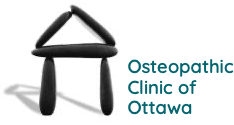The Benefits of Osteopathic Manual Therapy can be quite subtle to quite amazing. It really depends on how your systems respond to treatment. There are many conditions that Osteopathic Manual Therapy can help with.
Conditions Treatable with Osteopathic Manual Therapy
- Low Back and Neck Pain
- Migraines and Headaches
- Shoulder and Hip Pain
- Sciatica
- T.M.J (Jaw pain)
- Motor Vehicle Accidents
- Repetitive Strain Injuries
- Constipation
- Abdominal Bloating or Pain
- Esophageal Disorders (G.E.R.D)
- Incontinence
- Pelvic Floor Pain
- Irritable Bowel Syndrome (I.B.S)
- Neurological Disorders
- Pediatric Conditions (ie. colic, sucking difficulty, spitting up)
- Chronic Ear Infections
- Post Concussion Syndrome and Head Trauma
- Genitourinary Problems
As you read on, you will notice that Osteopathic Manual Therapy can help most people and can be done in several different fashions. I am merely breaking it down to show you the different types of techniques that many osteopaths around the world use. However, one must remember that Osteopathy is not a set of techniques rather it’s base on the philosophy that the body is a unit and you have to treat it that way. Here is only a small list of techniques that are used by osteopaths, but these are the ones that I prefer to use more frequently.
Cranial Osteopathy
Cranial Osteopathy is a refined and subtle type of Osteopathic treatment that encourages the release of stresses and tensions throughout the body, however emphasizing the head. It is a gentle yet extremely effective approach that may be used in a wide range of conditions for people of all ages, from birth to old age. Osteopaths are trained to feel a very subtle, rhythmical shape change that is present in all body tissues. This is called the Cranial Rhythm. This movement is of very small amplitude, therefore it takes practitioners with a very finely developed sense of touch to feel it. This rhythm was first described in the early 1900s by Dr. William G. Sutherland and its existence was confirmed in a series of laboratory tests in the 1960 and 1970s. As tension accumulates anywhere in the body, these tensions can disrupt the cranial rhythm. An Osteopath can compare what your cranial rhythm is doing to what is considered ideal, then treat it to improve your system’s proper cranial rhythm.
Visceral Therapy
The visceral system relies on the interconnected synchronicity between the motions of all the organs and structures of the body. Due to the dedicated research and clinical work of Jean-Pierre Barral D.O with the viscera, he developed a form of manual therapy that focuses on the internal organs, their environment, and this potential influence on the many structural and physiological dysfunctions of the body. The term he coined for this therapy was Visceral Manipulation. The visceral system relies on the interconnected synchronicity between the motions of all the organs and structures of the body. At optimal health, this harmonious relationship remains stable despite the body’s endless varieties of motion. But when one organ cannot move in harmony with its viscera due to the abnormal tone, adhesions, or displacement, it works against the body’s other organs and muscular, membranous, fascials, and osseous structures. This disharmony creates fixed, abnormal points of tension that the body is forced to move around. And that chronic irritation, in turn, paves the way for disease and dysfunction.
Visceral Therapy relies on the palpation of the normal and abnormal forces within the body. By using specifics techniques, osteopaths can evaluate how abnormal forces affect the normal body forces at work. The goal is to help the body regain its proper mobility and motion in the viscera. These effects encompass many areas of bodily functions. These gentle manipulations can improve the function of the individual organs, their surrounding organ system, and the structural integrity of the entire body.
Myofascial Release Therapy
Myofascial Release Therapy represents a philosophy of care in which the therapist facilitates the clients’ own inherent ability to correct soft tissue dysfunction. Originally described in Osteopathic writing’s in the 1950s, Myofascial is a highly interactive stretching technique that requires feedback from clients. This feedback will determine the force, the direction, and how long to maintain the stretch. Myofascial is a whole-body treatment because the brain recognizes that our current posture, muscular tension, and movement patterns as being “normal” – however not necessarily being as efficient or pain-free that it should be.
So as you can see Osteopathy is not limited to specific techniques or conditions. As an Osteopath, I am very respectful to your system and will always work with you and with your condition in the most gentle way.
